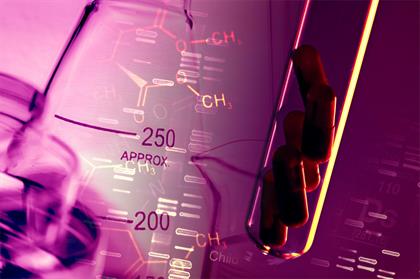
Proteolysis Targeting Chimeras (PROTACs) are a novel approach for degrading target proteins. Recently, a new split-and-mix PROTAC (SM-PROTAC) system based on liposome self-assembly, known as LipoSM-PROTAC, was reported in the Journal of the American Chemical Society.
In recent decades, PROTACs have become an attractive technology in drug development. Candidate drugs like ARV110 and ARV-471 have entered Phase I/II clinical trials, indicating the potential of PROTACs in the treatment of cancer and other diseases. The high selectivity, resistance-overcoming capabilities, and ability to target previously undruggable proteins make PROTACs effective in various diseases, including neurological disorders, inflammatory diseases, and cancer.
Peptide-Based SM-PROTAC
Traditional PROTACs are linear structures that connect target protein ligands and E3 ligands with suitable linkers. However, the linear structure limits the simultaneous binding of multiple target proteins, resulting in lower binding efficiency. To address this, researchers developed a new peptide-based self-assembling PROTAC nanoplatform, split-and-mix PROTAC (SM-PROTAC), which offers features like easy screening, programmable ligand ratios, self-optimizing biomolecular spatial recognition, and multifunctional applications. This platform was applied to various target proteins, including ERα, EGFR, MEK1/2, BRD2/4, CDK4/6, AR, BCR-ABL, and demonstrated significant protein degradation. The platform has potential applications for biomolecule regulation, including the fields of epigenetics, gene editing, and biomolecule modification regulation.
Liposome-Based LipoSM-PROTAC
However, the low drug efficacy of peptide-based SM-PROTACs hindered their further development in the biomedical field. Therefore, there was a pressing need for a more effective PROTAC nanoplatform for biomedical applications. Due to the ease of formulation, self-assembly, and high load-carrying capacity of liposomes, researchers combined SM-PROTAC with liposomes, leading to the development of a split-and-mix nanoself-regulating platform called LipoSM-PROTAC. This platform was characterized and validated for its biological performance.
Initially, researchers modified and synthesized PEG-target protein ligands, PEG-E3 ligand ligands, and PEG-folate structures, successfully preparing liposome nanoparticles with superior performance. These nanoparticles carried multiple ligands, including E3 ligand, target protein ligand, and folate ligands on their surfaces. The binding of folate molecules on the nanoparticle surface to folate receptors on cell surfaces allowed for more efficient cellular uptake of the drug, further increasing drug uptake within cells. Cell penetration experiments using flow cytometry confirmed the cell-selective uptake properties of the LipoSM-PROTAC platform, offering a new solution to mitigate adverse reactions in normal tissues or cells.
Additionally, due to the presence of multiple ligands on the nanoparticle surface, the nanoparticles effectively recruited E3 ubiquitin ligases and target proteins. The proximity-induced effect of ligands on the liposome nanoparticle surface allowed for the recognition and degradation of target proteins by the proteasome.
LipoSM-PROTAC Evaluation
To comprehensively assess the biological performance of the LipoSM-PROTAC platform, researchers used ERα as the target protein and verified its degradation mechanism, degradation activity, and adjustable ratio capabilities. Western blot experiments demonstrated that this new drug development platform, LipoSM-PROTAC, was highly effective. Compared to peptide-based PROTACs, the LipoSM-PROTAC system achieved therapeutic effects at lower concentrations. The platform's folate-selective delivery capability enabled precise targeting of specific cell lines, offering superior biocompatibility and significant clinical translation potential across multiple biomedical applications.
In conclusion, researchers have designed a novel delivery platform, LipoSM-PROTAC, which effectively transfers traditional PROTAC ligands onto liposomes. LipoSM-PROTAC offers advantages such as high drug efficacy, strong targeted delivery capabilities, easy screening, ligand ratio adjustment, and self-optimizing biomolecular features. It can simultaneously recruit multiple target proteins and E3 ubiquitin ligases, significantly reducing the concentration of target proteins. The LipoSM-PROTAC system achieves therapeutic effects at low concentrations and holds great potential for clinical translation. Overall, the liposome-based platform demonstrates high drug efficacy, offering promising applications in PROTAC and other biomolecular regulation fields.
Leave a Reply
Related Products
You Might Like Also

Lipids Used in COVID-19 mRNA Vaccines
The COVID-19 pandemic has killed millions of people. Vaccines certainly are the most outstanding ways to prevent major diseases and death, though they haven't eliminated infections. At present, the most effective vaccine is the mRNA vaccine developed by Pfizer-BioNTech and Moderna. Before that, mRNA technology stopped in the lab phase. Read More

Mechanism of Action of Paclitaxel
Paclitaxel is a natural anticancer drug with the molecular formula C47H51NO14. It has been widely used in the clinical treatment of breast cancer, ovarian cancer, and certain head and neck cancers, as well as lung cancer. Its novel and complex chemical structure, extensive and significant biological activity, unique mechanism of action, and scarce natural resources have gained immense favor among botanists, chemists, pharmacologists, and molecular biologists, making it a prominent anticancer star and research focus in the latter half of the 20th century. Read More

Fermented Raw Material for Cosmetic Skincare Product
The cosmetics and skincare industry is constantly evolving and a recent trend that has emerged is the use of fermented ingredients in skincare products. Fermentation is a microbial metabolic process that has been used for centuries in food and beverage production, and now it has been extended to the cosmetic industry. Read More

Hypoglycemic Functional Factors in Natural Products and Their Mechanisms of Action
Diabetes is a common clinical disease, and with the improvement of living standards, an increase in the number of obese people, and the intensification of aging populations, the incidence of diabetes is increasing year by year. Read More

Nanobodies Definition, Structure, Advantages and Applications
Nanobodies are the smallest functional single-domain antibodies known to be able to stably bind to antigens, and have unique structural and functional advantages. The molecular weight of nanobodies is only 12-15 kDa, which retains the antigen binding ability of traditional antibodies. However, nanobodies have higher solubility and stability, and have unique advantages in biological function and biochemical characteristics. Therefore, nanobodies have shown good control effects in disease diagnosis, cancer and infectious diseases. Read More

New Technology to Promote Drug Development-AI Technology
For a long time, the research and development of each new drug has faced the challenges of high cost and long cycle. In response to these challenges, major pharmaceutical companies have shifted from targeting common diseases to developing drugs for specific diseases. At the same time, these companies are constantly looking for new technologies for new drug development, such as high-throughput screening technology, DNA encoded chemical library, computer-aided drug discovery, and artificial intelligence. Read More










